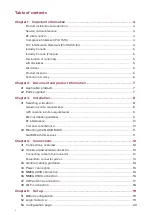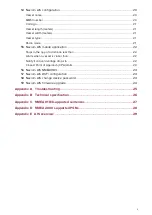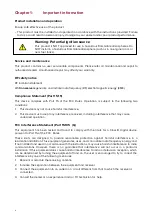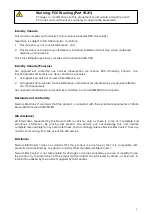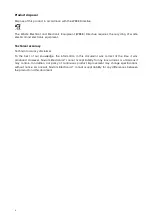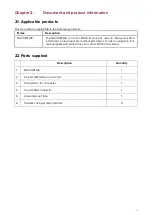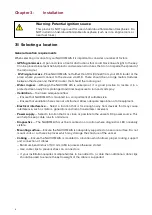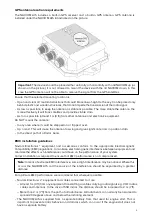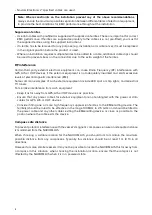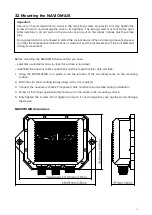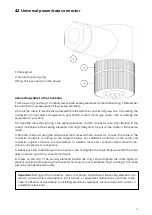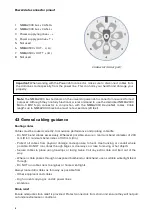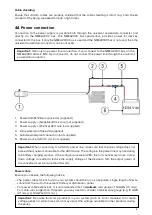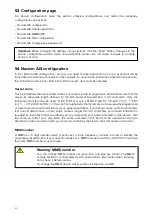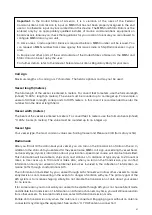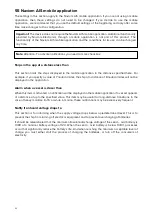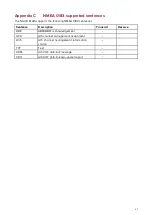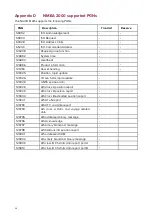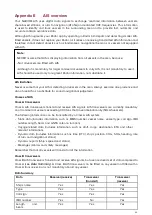
14
Power/data connector pinout
1.
NMEA2000 bus « CAN-H »
2. NMEA2000 bus « CAN-L »
3. Power supply negative «
−
»
4. Power supply positive «
+
»
5. Not used
6. NMEA0183 « OUT
−
» ( A )
7. NMEA0183 « OUT
+
» ( B )
8. Not used
4.3
General cabling guidance
Routing cables
Cables must be routed correctly, to maximize performance and prolong cable life.
• Do NOT bend cables excessively. Wherever possible, ensure a minimum bend diameter of 200
mm (8 in) / minimum bend radius of 100 mm (4 in).
• Protect all cables from physical damage and exposure to heat. Use trunking or conduit where
possible. Do NOT run cables through bilges or doorways, or close to moving or hot objects.
• Secure cables in place using tie-wraps or lacing twine. Coil any extra cable and tie it out of the
way.
• Where a cable passes through an exposed bulkhead or deckhead, use a suitable watertight feed-
through.
• Do NOT run cables near to engines or fluorescent lights.
Always route data cables as far away as possible from:
• Other equipment and cables.
• High current carrying ac and dc power lines.
• Antennas.
Strain relief
Ensure adequate strain relief is provided. Protect connectors from strain and ensure they will not pull
out under extreme sea conditions.
Important:
When working with the Power/data connector, make sure to disconnect cables from
the data lines and especially from the power line. This can harm your health and damage your
property.
Note:
The NMEA2000 bus terminals on the universal power/data connector are wired for test
purposes. Although they are fully functional, we recommend to use the dedicated NMEA2000
Micro-C M12 5-pin connector in conjunction with the NMEA2000 DeviceNet cables. Cable
lengths up to NMEA2000 backbone must not exceed 6m (20 feet).
Connector (inner part)
Summary of Contents for AIS
Page 1: ......


